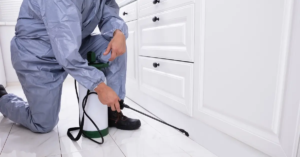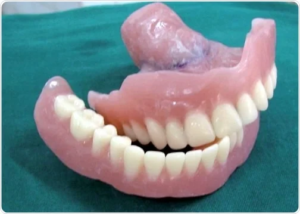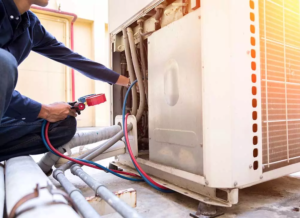When your vehicle sputters to a stop, it can be frightening and stressful. Staying calm, knowing what to do, and keeping a well-stocked emergency kit can help minimize the disruption of a roadside problem.
Most auto insurance companies offer roadside assistance coverage. It can include towing, flat tire service, fuel delivery, battery jump-starts and more. Contact Emergency Roadside now!

A battery jump-start (also known as a boost) is a temporary connection to another vehicle’s battery that provides electricity enough to crank the engine of the disabled car. The other car’s battery recharges the disabled vehicle’s battery while the engine is running, and the auxiliary power source can be removed once the car’s own charging system is back to normal.
If you have a set of jumper cables in your trunk, this is one of the easiest things you can do to help an emergency roadside driver out. Having these handy can also help you if your vehicle is ever in need of a jump-start yourself.
To use jumper cables, locate the positive and negative terminals on both batteries. These are usually marked with a (+) and a – sign, but you may need to wipe away some grime to see them. Then, connect the positive jumper cable clamps (often red) to the positive terminals on both batteries, making sure that they are connected correctly. Finally, connect the negative jumper cable clamp to the bare metal ground point of the working car’s battery (not to its negative terminal).
Next, start the engine of the good car and let it run for two or three minutes. After that, attempt to start your own vehicle. If it doesn’t start, allow the engine to idle for a few more minutes. If it still doesn’t start, your battery or some other component probably needs replacement.
When finished, disconnect the jumper cables in reverse order, first unclamping from your own vehicle’s ground point, then removing the black clamp from the working car’s battery and lastly unclamping from the dead battery’s negative terminal (making sure that the negative clamp isn’t touching any other metal objects). Be careful not to touch any of the exposed metal on either battery for safety. Be sure to thank your good Samaritan and drive around for a few minutes after the jump to ensure that the battery has charged. Leaving the engine running after jumping helps your battery recharge more fully, and you’ll be ready to hit the road again in no time.
Tire Changes
If you experience a flat tire, it’s important to remember not to panic and to take steps to ensure your safety. First, make sure to engage your emergency flashers and pull over in a safe spot with plenty of room for yourself and other drivers around you. You may also want to use flares or reflective warning triangles to let other motorists know you’re in distress. Next, put your vehicle in park and activate the parking brake. You can also use wheel wedges to prevent your car from rolling while you change the tire. Finally, it’s a good idea to set out any tools or spare tires in advance of needing them, so you’re familiar with where they are and ready to use them when the time comes.
Changing a flat tire isn’t easy, especially on a busy road, and can be hazardous for inexperienced or untrained drivers. A professional, however, is trained to handle the process swiftly and efficiently. They’ll ensure the correct tire is installed and will follow specific tightening sequences to avoid further damage or potential accidents. In addition, a professional can often repair punctured tires, providing a temporary fix until you can have them replaced.
While regular maintenance, such as checking tire pressure and inspecting for damage can significantly reduce the risk of unexpected flats, there’s always a chance that something could happen on the road, regardless of how careful you are. This is why having access to a professional emergency roadside service is so valuable, as they can minimize the stress of a flat tire by handling the entire issue on your behalf.
If you don’t have a spare tire, consider getting one or upgrading to run-flat tires, which are designed to allow your vehicle to drive a limited distance after a puncture or blowout. A roadside assistance program can also provide a free tire replacement or tow, minimizing the cost of an unexpected flat and allowing you to get back on your way. With quick response times, professional expertise, and round-the-clock availability, emergency roadside services can help you deal with an unfortunate situation like a flat tire without having to worry about your safety or the impact on your day.
Fuel Delivery
Having the ability to call for roadside fuel delivery is an invaluable asset for drivers. It eliminates the need to seek out gas stations in potentially unsafe or remote areas and saves time, too. Whether you’re stuck on the side of the road with an empty tank or need to get back to work on a tight schedule, quick and reliable service can prevent your day from unraveling.
Typically offered by towing companies, auto clubs, and specialized roadside assistance providers, these services offer on-the-spot refueling that can help motorists avoid running out of fuel. They’re especially useful for those in remote locations or facing adverse weather conditions, when stepping outside to seek out a gas station can be dangerous. Roadside fuel delivery is also a convenient option for elderly or disabled motorists who may have difficulty walking long distances to refuel their vehicle.
Refueling your car with roadside fuel delivery can be as simple as contacting the service and providing details about your location, the type of vehicle, and the desired amount of fuel. Upon arrival, the service provider can fill your vehicle’s tank and provide you with a receipt for your records. When requesting a service, be sure to choose a provider with a good reputation and extensive customer support.
When you choose a qualified roadside fuel delivery service, you can rest assured that the team will be experienced and trained to safely handle and deliver gasoline and other automotive fluids. They’ll follow strict protocols to ensure that your fuel is handled correctly, preventing environmental damage and other hazards. They’ll also take the time to inspect your vehicle and fuel storage tank for safety, ensuring that they comply with regulations and are properly installed.
Having an emergency roadside fuel delivery service on speed dial can transform an otherwise stressful situation into a minor inconvenience that’ll keep you safe and on schedule. But, while these services are a great addition to your roadside emergency kit, taking proactive measures can also help you avoid running out of gas in the first place. Use a fuel consumption calculator or onboard trip computer to manage your fuel usage and plan your refueling stops accordingly.
Lockout Service
Lockout service is an essential emergency roadside service that can help drivers in a number of situations. Many automakers offer a range of roadside assistance plans for new and certified pre-owned vehicles, which often include a lockout component.
Some of the most common reasons for car lockouts are unintentional locking, battery draining, and mechanical problems with door locks or key fobs. Unintentional locking is a common mistake that can be avoided by always double-checking that you have your keys in hand before closing a vehicle door. Many modern cars also rely on electronic key fobs to unlock, so if the battery in these devices drains, it can prevent you from getting inside your vehicle. Mechanical issues with door locks and key fobs are another common cause of car lockouts, and these may be exacerbated by dirt and grime or over-use over time.
Roadside assistance companies that provide vehicle lockout services are equipped with specialized tools and knowledge to get into your car without doing any damage. They can typically open the vehicle within a matter of minutes, which can prevent travel delays and keep you safe on the road.
Whether you’re locked out because of a lost key or simply forgot to take your keys with you when leaving your car, it can be a stressful experience. Adding roadside assistance coverage to your auto policy helps you pay for help when you need it. It’s like having a friend you can call when you’re stuck on the side of the road or in your driveway.
Aside from being a great way to avoid expensive locksmith fees, roadside assistance covers other common automotive problems. Depending on the provider and your plan, you can receive a tire replacement or repair, battery jump-starts, and even a temporary fuel delivery. Having these kinds of services at your disposal will make your driving experience safer and less stressful, so it’s well worth checking out your options to find the right fit for you.







